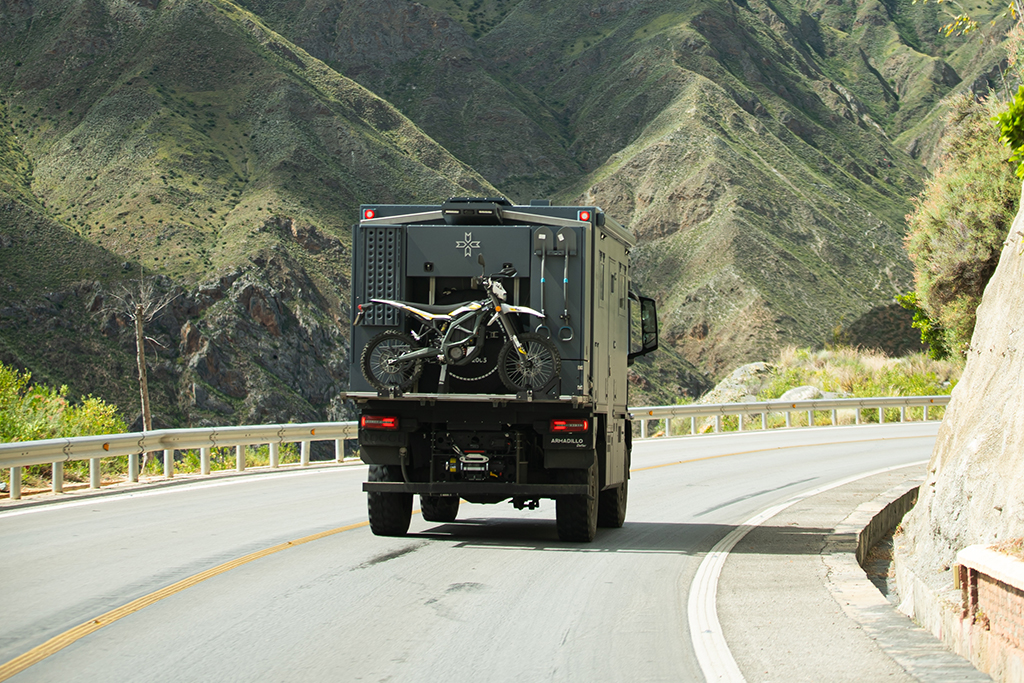news2024-08-03 10:07:00
The idea of "having more than enough" is deeply rooted in the Chinese concept, and this is reflected in all areas of modern life. Whether traveling or in daily life, people always like to prepare more than the actual needs, just in case. When this concept collides with the emerging RV culture, people begin to worry about not having enough water and electricity during travel. The resulting large amount of water and electricity has become one of the selling points of many RV manufacturers. However, if you don't understand it clearly, and blindly pursue large amounts of water and electricity, you will fall into this big misunderstanding in the RV circle!

What is hydropower?
The so-called "large water and large electricity" simply means that the RV is equipped with a large water tank and battery capacity, which can provide a longer supply of water and electricity for daily life. At first glance, for some friends who are new to RVs, such a configuration does seem to mean a worry-free journey, but if you think about it carefully, you will find that the problems and hidden dangers it has are far more complicated than you think.

What exactly is the problem with massive water and electricity?
1. Reduced security
很多新手在刚了解房车,打算入手房车的时候就过分的去考虑这个因素,其实是因为很多人忽略了一个问题。那就是房车始终不等于房子,与传统的固定住宅不同,房车最大的特点在于其移动性。特别是对于那些热爱探险、经常穿越复杂地形的越野房车爱好者而言,过重的水箱和电池组会显著增加车辆的整体重量。这不仅会影响车辆的操控性能,还会对驾驶者及乘客的安全构成威胁。

2. Increased fuel consumption
Larger tanks and batteries mean heavier loads, and higher loads lead to reduced fuel efficiency. For long-distance trips, this means more frequent refueling, which increases the cost of travel and may affect the flexibility of itinerary arrangements. Especially in remote areas, where gas stations are sparsely distributed, excessive fuel consumption may become a major concern.

3. Space Occupancy
Placing overly large water tanks and batteries in a limited space will inevitably occupy the space that could be used to store luggage or other necessities, and may even affect the overall internal layout of the RV and reduce living comfort.

Based on the above problems, we have fully considered various factors in the driving process in the design of Amodiro RV. In addition to considering the water and electricity needs, we also comprehensively consider the overall performance of the vehicle, adhere to the lightweight design direction of the vehicle, and ensure its adaptability and safety under various road conditions. Through reasonable weight balance and efficient energy management, you can achieve a comfortable and economical RV life without large amounts of water and electricity.

Of course, there will still be some friends who will have electricity anxiety during the high temperatures in summer, worrying that the energy consumption of air conditioning will affect the power supply during travel. Then we will take Challenger C as an example to tell you about Amodillo’s energy management.

The Amodiro Challenger C is equipped with a 24V DC inverter air conditioner. On a hot day with a temperature of 38 degrees, we set the temperature to 25 degrees and turned off other electrical equipment. At this time, the air conditioner consumed more than 800 watts of power. When the indoor temperature reached the set 25 degrees, the DC power of the air conditioner dropped to more than 400 watts.


At the same time, there are 8 solar panels installed on the roof, each with a charging power of 110 watts. Even if all electrical devices are turned off and it is cloudy on the test day, it can still provide nearly 200 watts of charging power, and this number can be increased to 600-800 watts on sunny days. This means that even if we use the air conditioner continuously outdoors, we don’t have to worry about insufficient power.


In addition to solar charging, the car is also equipped with a 5-kilowatt charging inverter to support mains charging and driving charging. When the vehicle is started and the isolator is turned on, the driving charging power can reach more than 1,900 watts. During the test, we increased the idle speed to 1,000 rpm, and the charging power reached more than 2,000 watts. In addition, the lithium iron phosphate battery pack equipped in our car can store about 21 kWh of electricity. Even if solar energy, mains electricity, or driving charging are not used, the battery alone can ensure the normal operation of air conditioners and other electrical appliances for at least three days, and there is no need to worry about electricity.

In addition, we should note that if our vehicle is parked indoors for a long time and not in use, we must remember to fully charge the battery, then turn off our emergency stop button, and disconnect the power supply without worrying about battery discharge and attenuation.

In short, RV life is a way of life that pursues freedom and comfort, but it does not mean blindly pursuing large amounts of water and electricity. The charm of RV travel lies in exploring the unknown and enjoying nature, rather than simply moving your home onto wheels. For players who pursue the ultimate adventure experience, only by balancing the weight to create a lightweight can we better guarantee our off-road experience. After all, the real fun of the journey often lies in the process of exploring the unknown itself.

At the end of this article, I'll tell you a secret! We are about to introduce a new model that not only achieves the ultimate in water and electricity balance, but also puts a lot of effort into ultra-lightweight design. What does this mean? That's right, the off-road performance will also be greatly improved, allowing you to drive on any terrain as if it were flat ground, and enjoy unprecedented driving pleasure! Stay tuned!
